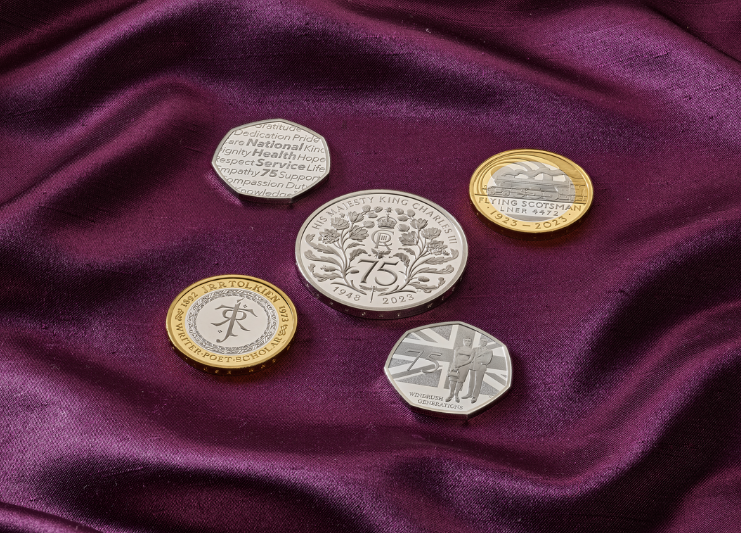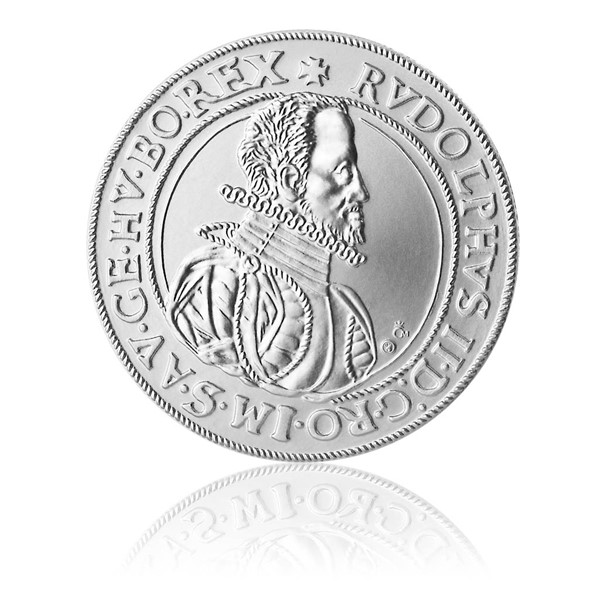New Facts On Drawing Prague Mint Coins
Wiki Article
How And Why Do You Use A Model Of A Plaster To Make A 3d Digital Model Of Gold Coins Or Medals?
The process of scanning requires special equipment to capture the plaster maquette digitally. The digital replica is utilized to serve a variety of purposes during the production process.
3D Scanning: High-resolution 3D scanners are utilized to capture all dimension and details of the model. These scanners are able to record measurements and geometry using laser scanning, structured light or other techniques.
Capturing surface information- The scanner emits light beams, or lasers onto the plaster model. The distortions or reflections created by these beams can be recorded by the scanner, capturing the model's surface information.
Data Collection - As it moves along the surface of the plaster models the scanner accumulates an enormous amount of information points. These data points are later used to create an electronic model of the model including its contours, geometry details, and contours.
Conversion into 3D Model- The collected data points are processed using specialized software, which reconstructs the data into a 3D digital model. This model reproduces the physical attributes and measurements of a plaster maquette.
There are a variety of reasons to make 3D digital models
Digital 3D model allows for precise replication of the physical model's dimensions and details. It is crucial to keep this accuracy in order to ensure that the final design of the gold coin or medal matches the original.
Digital models allow for easy modification or improvement. Designers can make adjustments to the 3D model without changing the original plaster maquette, making it possible to make improvements or corrections over time.
Compatibility With Manufacturing Processes Compatibility with Manufacturing Processes Digital 3D Models are compatible with different manufacturing processes including 3D printing and CNC machining, which allows the manufacturing of dies and molds for mass production.
Digital 3D models may be utilized to preserve and document the design. They can be stored digitally for future research, reproduction, or historical documentation purposes.
By scanning plaster models and creating 3D digital models designers and manufacturers can streamline their production processes to ensure precision of replication and use advanced manufacturing techniques to make gold medals and coins with a high degree of precision and fidelity. Check out the top rated Scanning and 3D Modeling Prague Mint gold medals website tips. including old coins, gold silver shops near me, 24k gold coins prices, gold sovereign, silver price in dollar, 1 ounce gold bullion, old coins, gold panda coin, gold medal of olympic, gold morgan dollar and more.

What Is The Purpose Of Using Vacuum Hardening On Dies That Are Used To Make Gold Coins Or Medals?
Vacuum hardening is a process which involves exposing dies to high temperatures and a controlled atmosphere in the furnace. Here's the overview for the dies for vacuum hardening.
Diets used to strike medals or coins are clean and free of any contaminants.
Loading Vacuum Furnace
The dies can be placed in a vacuum oven that creates a vacuum within the area of heat treatment.
Evacuation of Aircraft
The vacuum oven removes any air in the chamber creating an environment free of oxygen and other gases. This guarantees uniform heating and prevents the oxidation process from occurring.
Heating Phase-
The furnace needs to be heated to the temperature needed for hardening the dies. The temperature range depends upon the material being used and the method of hardening.
Soaking at High temperatures
The dies are held at a high temperature for a precise duration that allows the material to reach and maintain the desired hardness and metallurgical structure.
Cooling or cooling down
Following the soaking process, the dies are rapidly cooled or quenched using specialized techniques. The speedy cooling allows the metal achieve the required hardness.
Tempering (Optional).
In some instances the tempering process occurs after the hardening stage. Tempering involves reheating dies at a low temperature to ease internal tensions and improve toughness.
Quality Control Inspection
The hardened molds are thoroughly inspected and tested to ensure that the dies satisfy all the specifications.
Post-Treatment Handling-
The dies will be processed further including polishing or coating, before being used for coin or medal striking.
The process of hardening by vacuum increases the durability as well as the wear resistance and life span of the dies used to create gold coins or medals. By ensuring a controlled and clean environment it provides an exact and reliable method to ensure that the dies are hardened. Take a look at the recommended vacuum hardening Czechoslovakia gold coins site tips including gold and bullion, gold coin gold, silver price in dollar, gold and coin near me, apmex gold, coin buy silver, gold dollar coin 2000, gold dollar coin 2000, 2000 p gold dollar, american eagle gold coin 1 oz and more.

Why Are Dies Cleaned By Hand To Guarantee A Flawless Surface For Gold Medals And Coins?
Hand-polishing dies provide an even and smooth surface for gold coins and other medals. The more smooth the surface is, the more accurate quality reproduction of the fine details and intricate designs on the medals or coins.
Quality of the coin or medal is improvedA polished dash will ensure that the coins struck and/or medals are clean, clear edges and relief. This enhances the appearance and quality of the final product.
Reduced Tear and Wear Polishing is a fantastic option to reduce friction and wear when striking. A smooth die's surface reduces the chance of imperfections or irregularities on the struck coins or medals caused by rough surfaces on the die.
Consistency when Striking. Hand-polished dummies provide a consistent strike surface and guarantee uniformity during the coining process. For the design to maintain its accuracy, depth and overall quality, consistency is essential.
Die Longevity- Die that are polished well will be less susceptible to wear or damage during the striking procedure. Die dies are more durable and long-lasting and allow for more strikes to be made without sacrificing the quality.
Precision and accuracy- Hand-polishing gives the engraver the capability to refine and fine tune certain areas of the die. This will ensure that the exact details of the medal or coin are accurately reproduced. This accuracy is essential for the precision of the final product.
Quality Control - Polishing forms part of a quality control system. The die is inspected during the hand-polishing process to find any imperfections or inconsistencies and corrected before the strike.
Surface Finish - Polishing provides an unique finish or texture to medals and coins, enhancing their appearance.
Hand polishing dies of gold medals and coins with care is a crucial step to make sure that the final product is of high-quality as well as accurate and pleasing to the eye. It's crucial for the appearance, uniformity and long-lasting quality of the final product. Have a look at the best hand polishing Czechoslovakia gold coins website examples. including small gold coins, 1975 gold penny, chinese gold coins, gold and silver shops near me, 1 oz gold buffalo coin, 1 10 oz gold coin, 1 ounce gold, 1 oz silver price, silver price in dollar, gold and coin shops near me and more.

How And Why Are Limited Editions Or Collectible Gold Coins Individually Numbered
This helps guarantee authenticity, exclusivity and to increase the appeal of limited edition or collectible gold coins. How and why is this procedure carried out?
Sequential Numbering- Every coin in the limited edition or collectible series has an unique number, typically engraved or stamped onto the coin's surface or edge. This number identifies its place within the series.
Certificate of authenticity. The coin will be issued with a certificate of authenticity that matches the unique number of the coin. This certifies that the coin is genuine. It contains information on its series, the metal content, and the minting.
There are a variety of reasons to number each coin individually
Authenticity Assurance – Each number is a unique identifier that ensures the authenticity of the coin in the limited series. Each number acts like an unique identifier, and is a guarantee that a coin is authentic.
Exclusion and rarity The coins that have limited issue with specific numbers are regarded as more rare and exclusive. The limited availability of numbered coins makes them more desirable and desirable.
A number-ed coin is a collector's appeal, allowing collectors to track particular numbers and display them in a collection. The less significant or lower numbers in the series could be considered to be more important or desirable.
Individual Numbering - Collector Engagement can encourage collector engagement and a desire in completing sets or purchasing particular numbers. Some collectors will seek specific numbers because of their personal tastes or landmarks.
Value and Resell Potential- Coins that have distinctive numbers can have more value, particularly in the case where the serial number is smaller or if it's part of a desired series. These coins are valued by collectors because of their rarity and distinctive.
Provenance, Trackability, and DocumentationThe use of numbers is to facilitate tracking and documentation of each coin's historical background. This helps in proving provenance in the collectible market.
By numbering collectible or limited edition gold coin, mints, or their issuers, prove authenticity, establish exclusivity and increase the value of these coins to collectors looking for exclusive or valuable objects. Within the realm of numismatics, the coins that are numbered are of special significance and significance. Follow the recommended Prague Mint gold coin numbering more advice including 1972 gold dollar, gold silver dealers, gold eagle coin price, 1 oz gold, gold medal swimming, gold silver bullion, online silver buying, hidilyn diaz, one ounce of gold, 2000 gold dollar and more.
